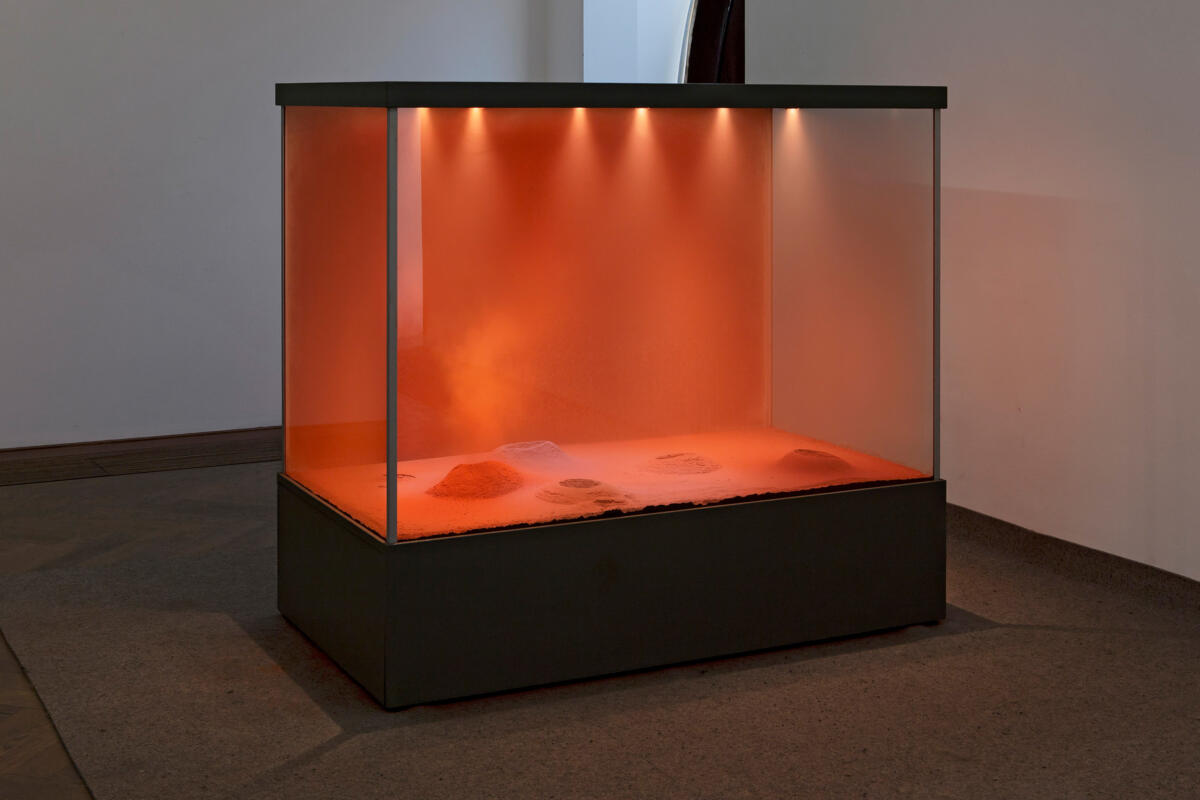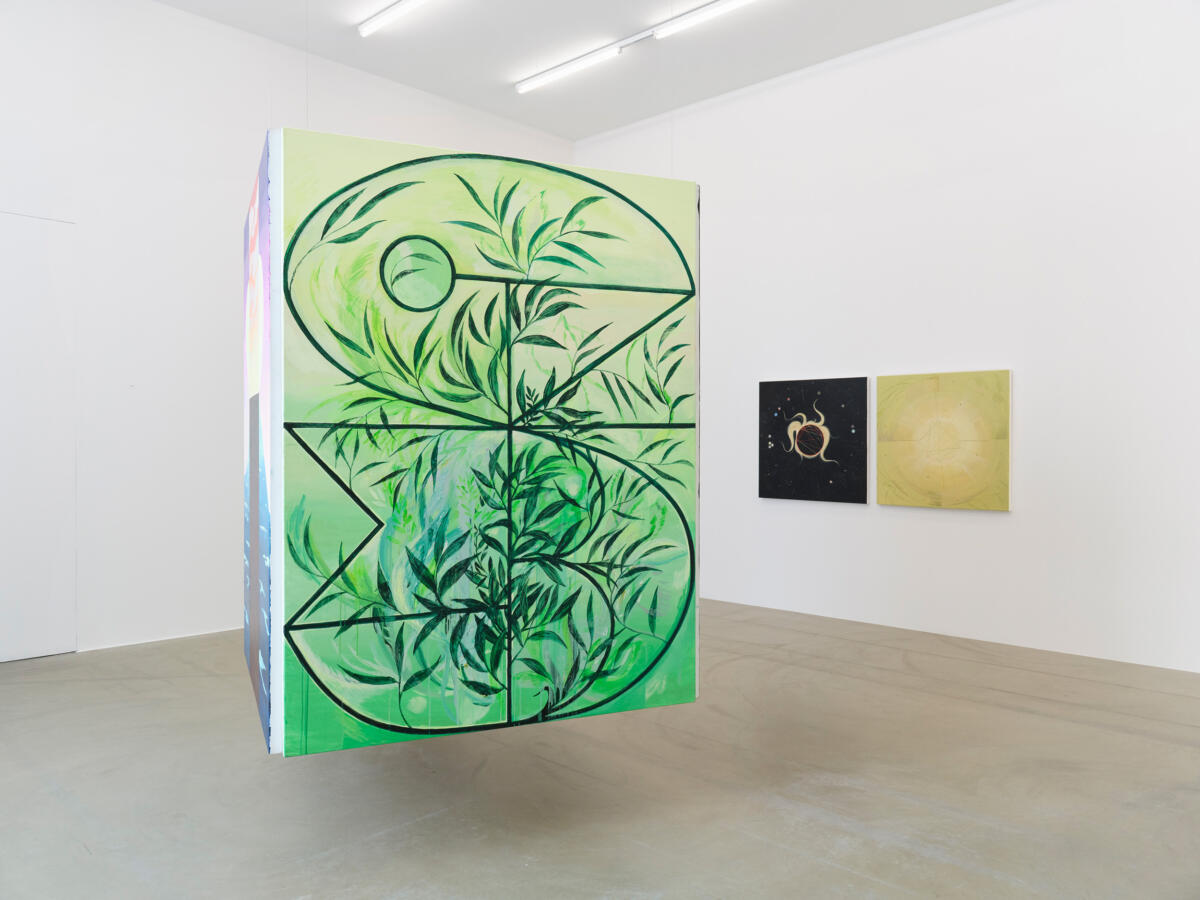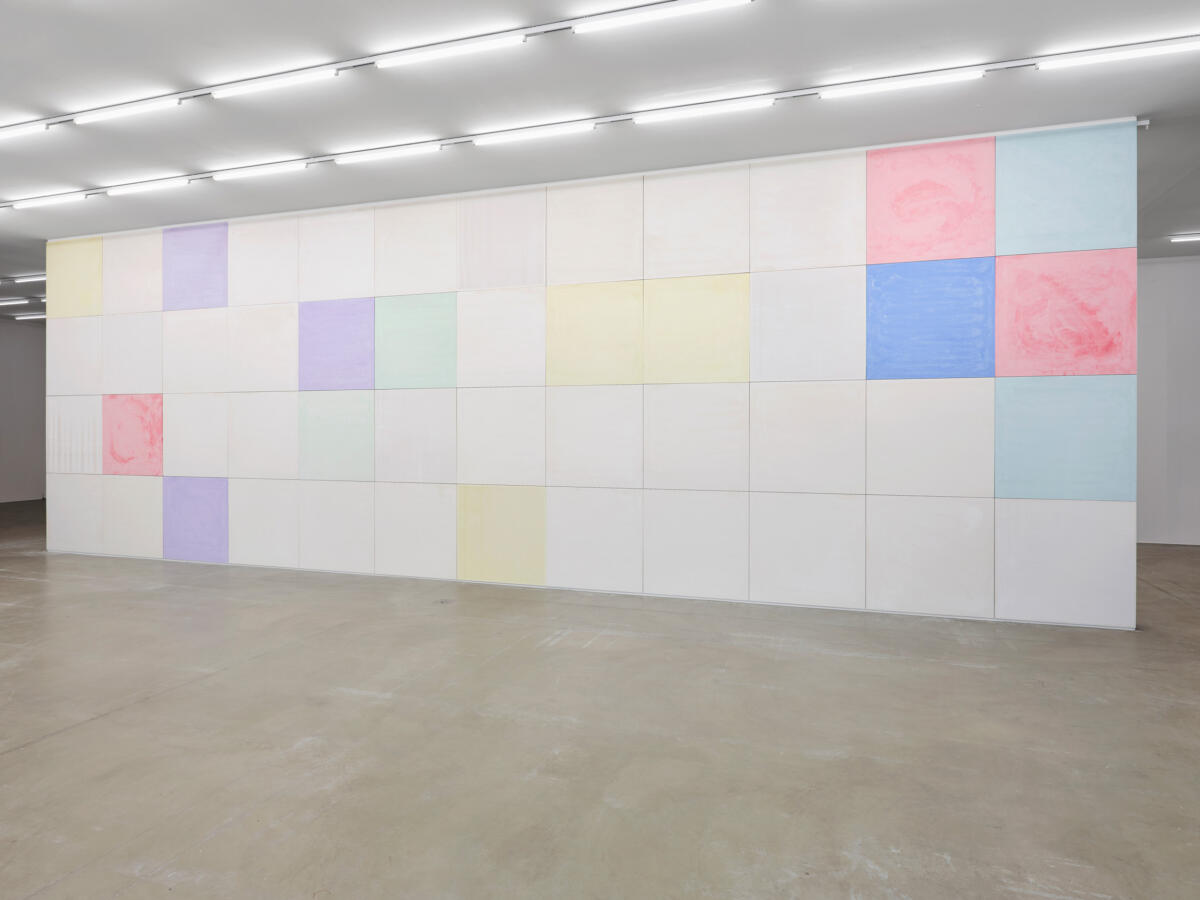[EN/DE] ‘Emma Kunz Cosmos’ at Aargauer Kunsthaus / Dora Budor in Conversation
![[EN/DE] ‘Emma Kunz Cosmos’ at Aargauer Kunsthaus / Dora Budor in Conversation](http://blokmagazine.com/wp-content/uploads/2021/05/dorabudor-originii-2019-1200x900.jpeg)
[EN]
The fascination of Emma Kunz (1892 – 1963) has never been greater than it is today. At the same venue where her work was discovered in 1973, the oeuvre of the Aargau researcher, healer and artist is presented alongside contemporary artistic practises. The latter reflect on Kunz’ work or particular topics related to her field of activity.
Emma Kunz is once said to have predicted that a time would come when her paintings would be understood. In fact, much that she anticipated in her holistic thought and practice seems quite natural in today’s art. Living a secluded life far removed from the art scene, she exemplified an expanded concept of art, rejected the idea of art versus non-art and instead opened it up to a wide range of aspects – research, medicine, natural history and the supernatural, the magical, the visionary. Kunz based her drawings on questions that she drew on graph paper with the use of a pendulum. On the principle of repetition and appropriation, she also reused finished drawings and re-explored them. The exhibition includes around sixty of these drawings, many of which are being shown for the first time. The dialogue with recently produced works by fourteen contemporary artists displays new and unfamiliar angles of an oeuvre that is highly contemporary in a time where traditional categories need to be critically questioned.


Dora Budor in conversation with Meret Kaufmann
Meret Kaufmann: At Aargauer Kunsthaus, you show Origin II (Burning of the Houses): a custom environmental dust chamber that reacts to external impulses. Can you describe how you first developed this work for a show at Kunsthalle Basel in 2019, and how it features in Aarau alongside Emma Kunz’s work?
Dora Budor: The works of the Origin… series came about through a long process of research for the show I am Gong, for which I developed a system that used the live soundscape of the concert hall expansion taking place across the street. This soundscape was sourced as a score for the exhibition, as all or most of the works and environments in the show were constituted to be governed and evolve by this unruly composition. My interest was to latch onto a real process, to parasite on its excess, so that the unintentional byproducts of labor and progress are then again recycled into the life of an exhibition. In other places where Origin II (Burning of the Houses) is shown, the work is composed from the reactions to the specific context and the outside conditions—in one way bringing the actual consequences of the developing landscape into the institution, but also blurring its specifics, as the multiplicity of human and nonhuman agencies makes it impossible to know whether the sonic spikes happen due to drilling into the asphalt, quarrels of the workers, or rain striking the construction tarp. Sound is, in essence, a form of pressure: it is a stirring of the molecular figuration of air, a force of oscillation that travels through a given medium, and also through bodies and buildings. So the work performs via extraperceptory senses, which is in some way similar to the expression of Emma Kunz’s pendant drawings. Conditions that we cannot see or sense visibly affect its state.
Emma Kunz understood herself less as an artist-author but rather as the medium of her image work, as channeling energies and giving shape to universal laws that underlie them. To this end, she had a technique involving graph paper, a ruler, pencils, a question, and a pendulum at hand. Your work, too, sets up a system which plugs the human into other, mostly machinic, energies; thus, it develops a dynamic of its own and challenges traditional notions of the artist as author. How do you understand your role(s) in making work? And what is at stake in challenging authorship in generating images or artworks today?
One of the main concerns of my work is how to destabilize and explode the boundaries of “being an object”—in other words, how to expand an idea of the artwork from a solid and finalized thing into a protean and evolving network of interactions and relations. Both buildings that I worked with in Basel were originally built by the same architect at the end of the nineteenth century, so one of the main approaches in the Origin… series was the idea of challenging the idea of preservation. In order to preserve something, might it be necessary to let it mutate and evolve? If you think about the way that art is usually conserved and archived, it is exactly the opposite; the main telos is to preserve things as they are—in a finalized, complete form. My intention is to redistribute some of the control, to allow the artwork to act differently according to changes in its environment and its time. I often think of the Origin… works as unstable “image- forms,” which are images created only to exist in a moment before they deconstruct and change into something else, an opposite tendency to the static and preserved work kept in museum collections… J. M. W. Turner’s work, which I used as reference, stems from his initial proclivity to include the weather, chance, and even the possi- bility for things to be destroyed. Some of Turner’s paintings were stacked in his studio under the gaping hole of a broken skylight, through which the rain and smog would enter and “finish” them, before he would go back, paint over, and let them soak again…
“My works are made for the twenty- first century,” Emma Kunz allegedly said—a quote that invites reflections on history, if not more speculation about the present and future. Origin II (Burning of the Houses) also casts a wide and tangled web in time, simultaneously invoking ancient and extraterrestrial landscapes, polluted bodies, and life yet becoming. How important is a historical situatedness as well as its willful confusion in your work?
The moment I am writing this, the sky of the San Francisco Bay Area has been transformed into an intense orange- yellow, and people report that ashes are falling from the sky as the effect of the ravaging wildfires. The atmospheric effects of the ash particles and smoke tint the sky with same “unnatural” colors as the ones that were pictured for the first time in three paintings by Turner a century and a half ago. My way of working sources transversal connections, and the way things have contingency through history and into the future, in order to be able to take a step back and realize a larger picture of life.
***
Dora Budor (b.1984 in Zagreb, lives and works in New York City) completed degrees at the Architecture University in Zagreb before moving to New York for an MFA at Columbia University. Since then Budor has been creating works at the intersection of architecture and art: installations, sculptures, and environments suffused with narratives and atmospheres simultaneously informed by cinema, science fiction, and scientific research. Budor’s works take on the guise of machines reflecting the pervasive hybridization of nature, humankind, and technology, while oscillating between the dys- and utopic. The artist often plugs into forgotten histories and infrastructural conditions to uncover dominant structures of power over human and nonhuman life in turn—as, for example, in the exhibition I am Gong (2019), where sonic frequencies from diverse activities involved intentionally or accidentally in the construction of a building were used as a score for the exhibition inside Kunsthalle Basel.
Meret Kaufmann (b. 1989, lives and works in Zurich and London), studied art history and theater studies at the Freie Universität Berlin and University College London (UCL). She is currently researching Rosemarie Trockel and psychoanalysis for her doctoral thesis and works as a lecturer, author, and cultural producer for the Zurich University of the Arts, the Emma Kunz Center, and the Centre for the Study of Contemporary Art (UCL), among others.
This interview was originally published in a catalogue accompanying the exhibition Emma Kunz Cosmos. A Visionary in Dialogue with Contemporary Art (January 23–May 24, 2021) at Aargauer Kunsthaus, Aarau. The show, curated by Yasmin Afschar, presents the work of Emma Kunz (1892 – 1963), a Swiss researcher, healer and artist, alongside contemporary artistic practises. The catalogue, edited by Yasmin Afschar and published by Aargauer Kunsthaus and Verlag Scheidegger & Spiess is avaliable for purchase at: https://shop.aargauerkunsthaus.ch/?op=product&id=7025.
The team at BLOK would like to cordially thank the authors: Dora Budor and Meret Kaufmann as well as Christina Omlin, media & communications officer at Aargauer Kunsthaus for their help and permission to publish the interview in our magazine.
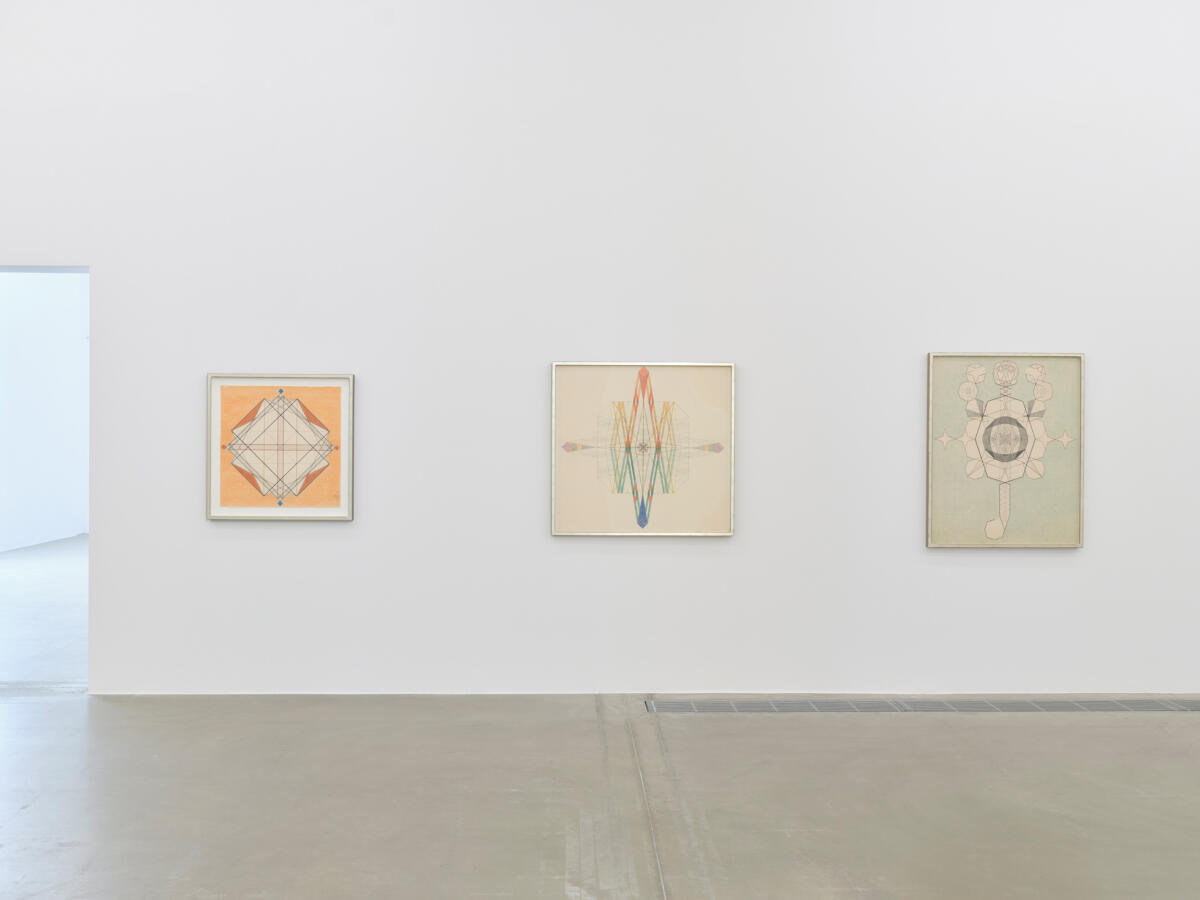
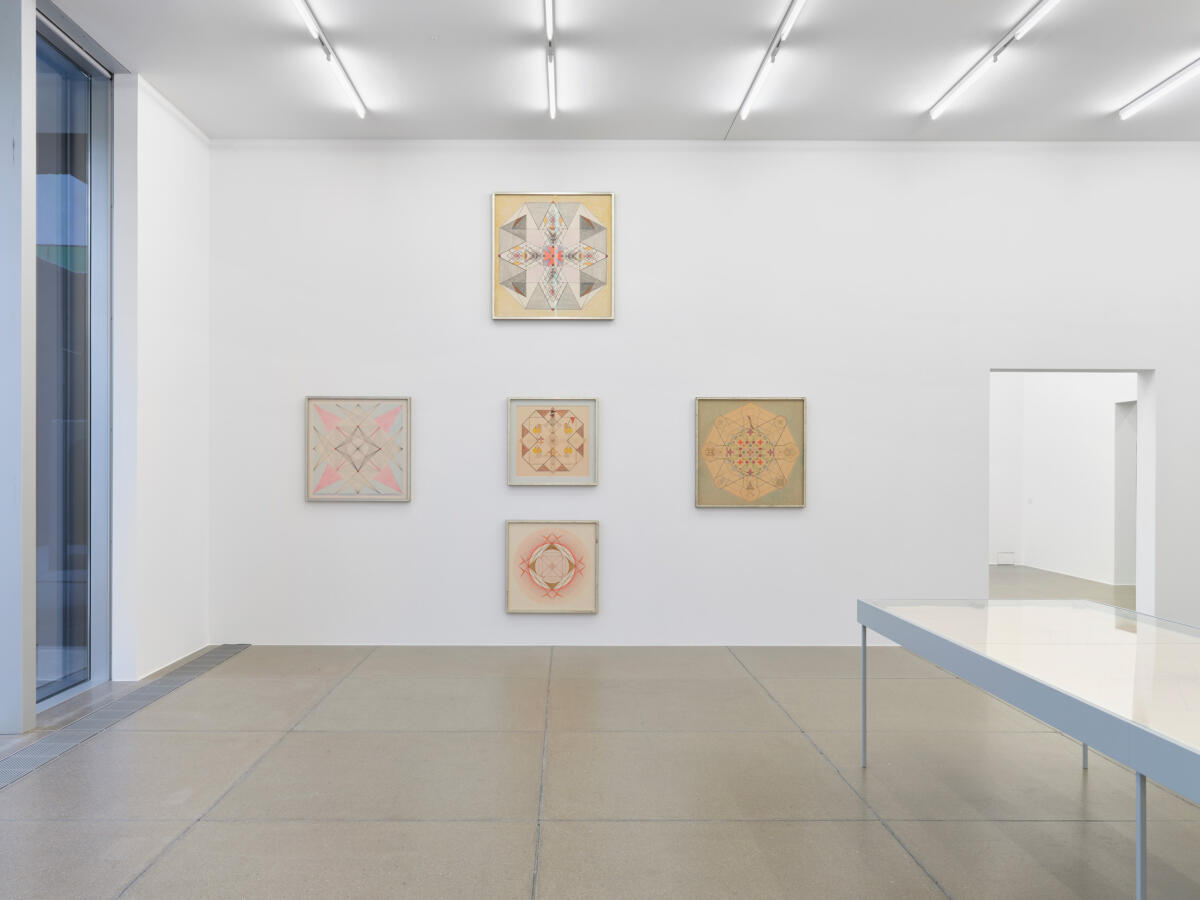


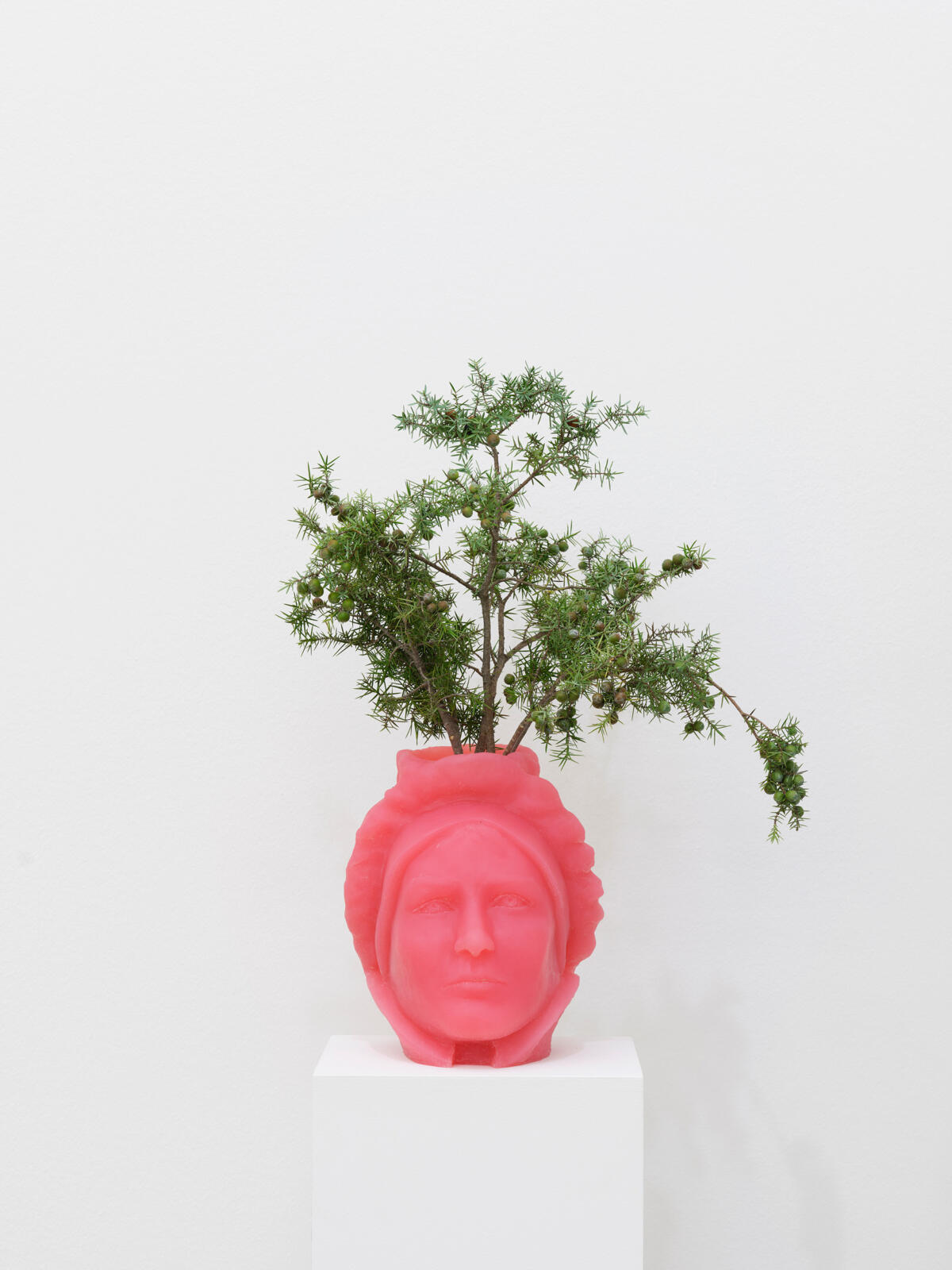

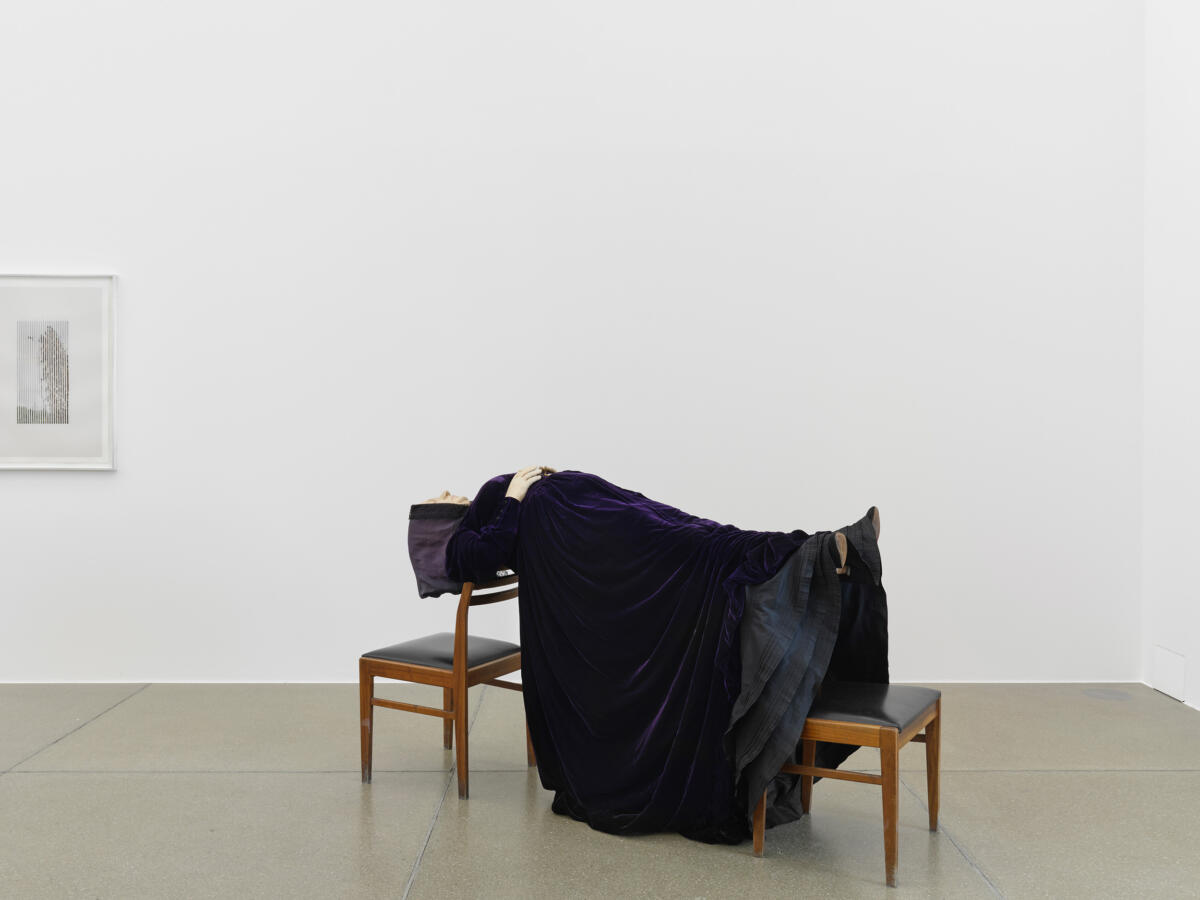
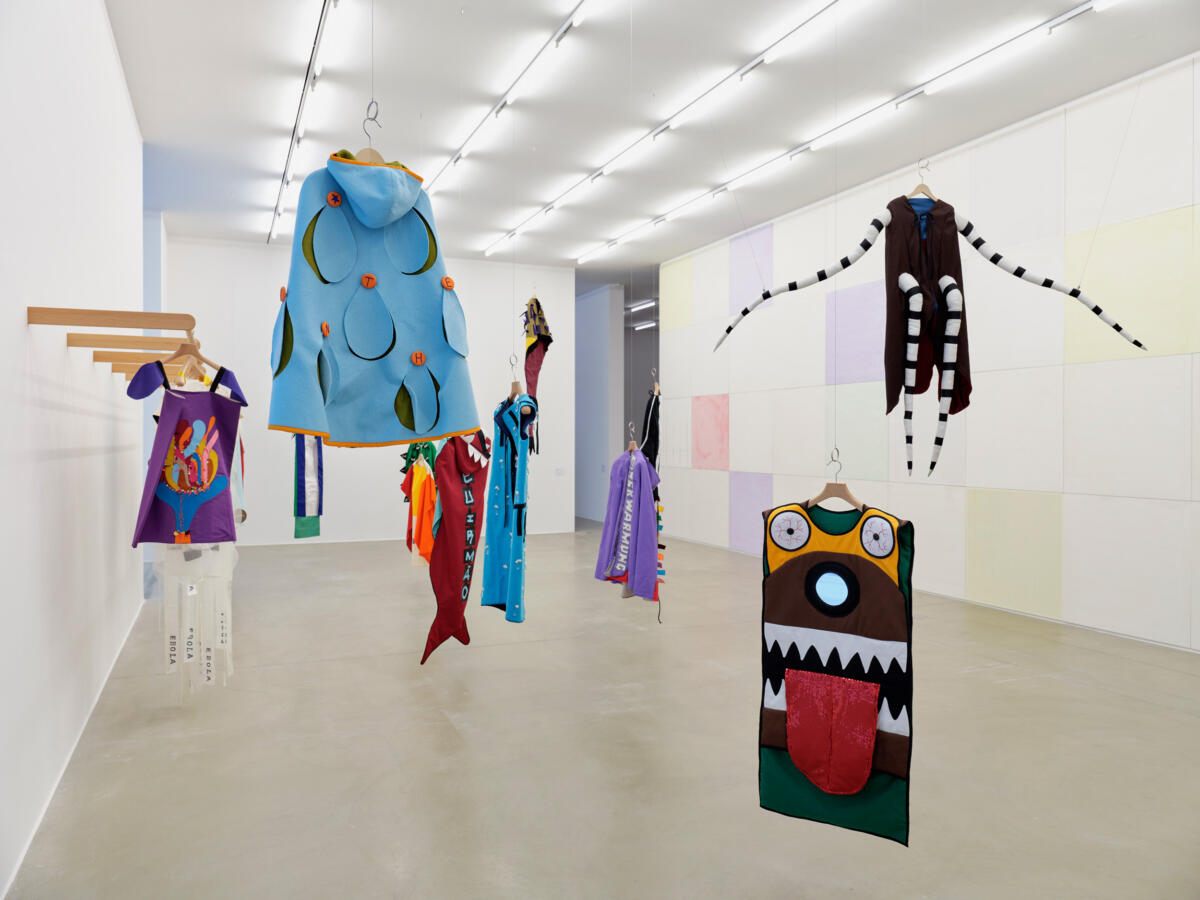
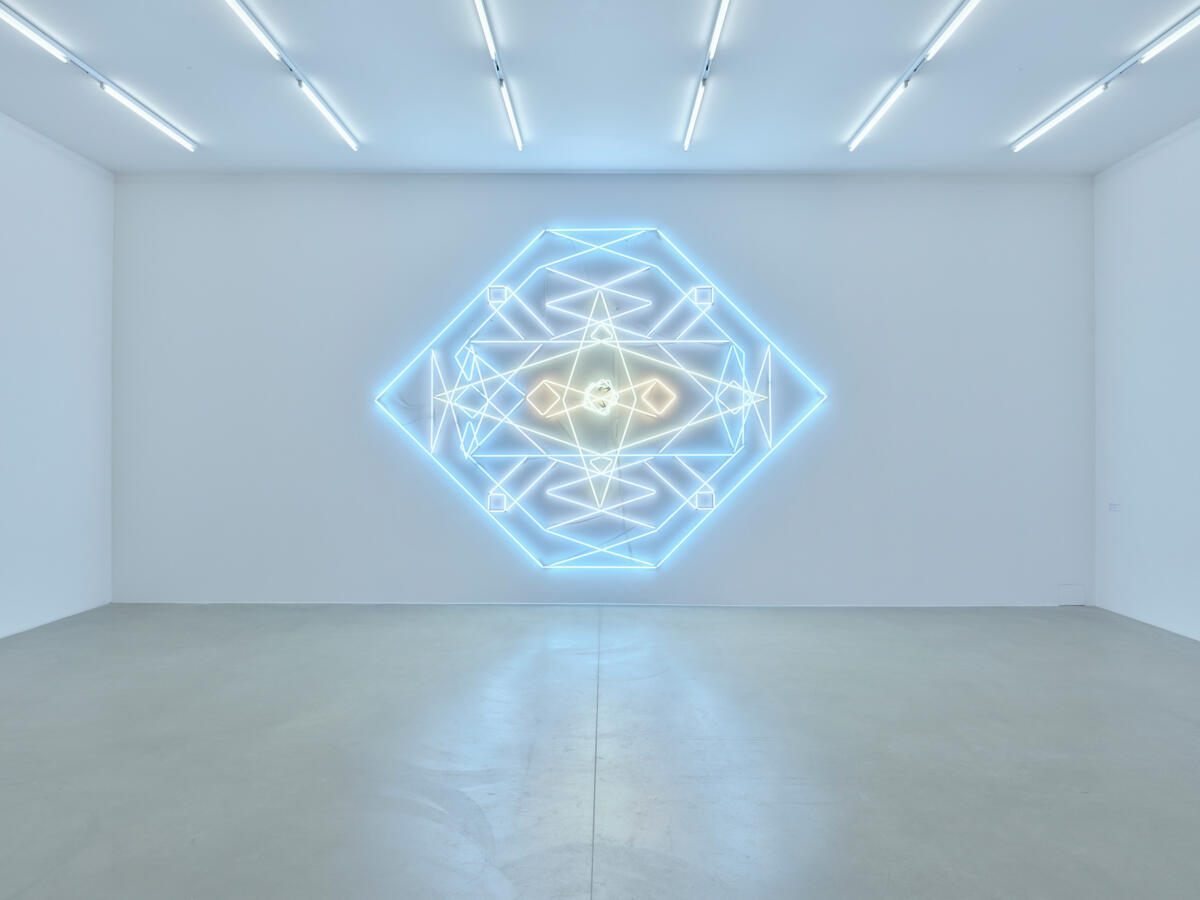
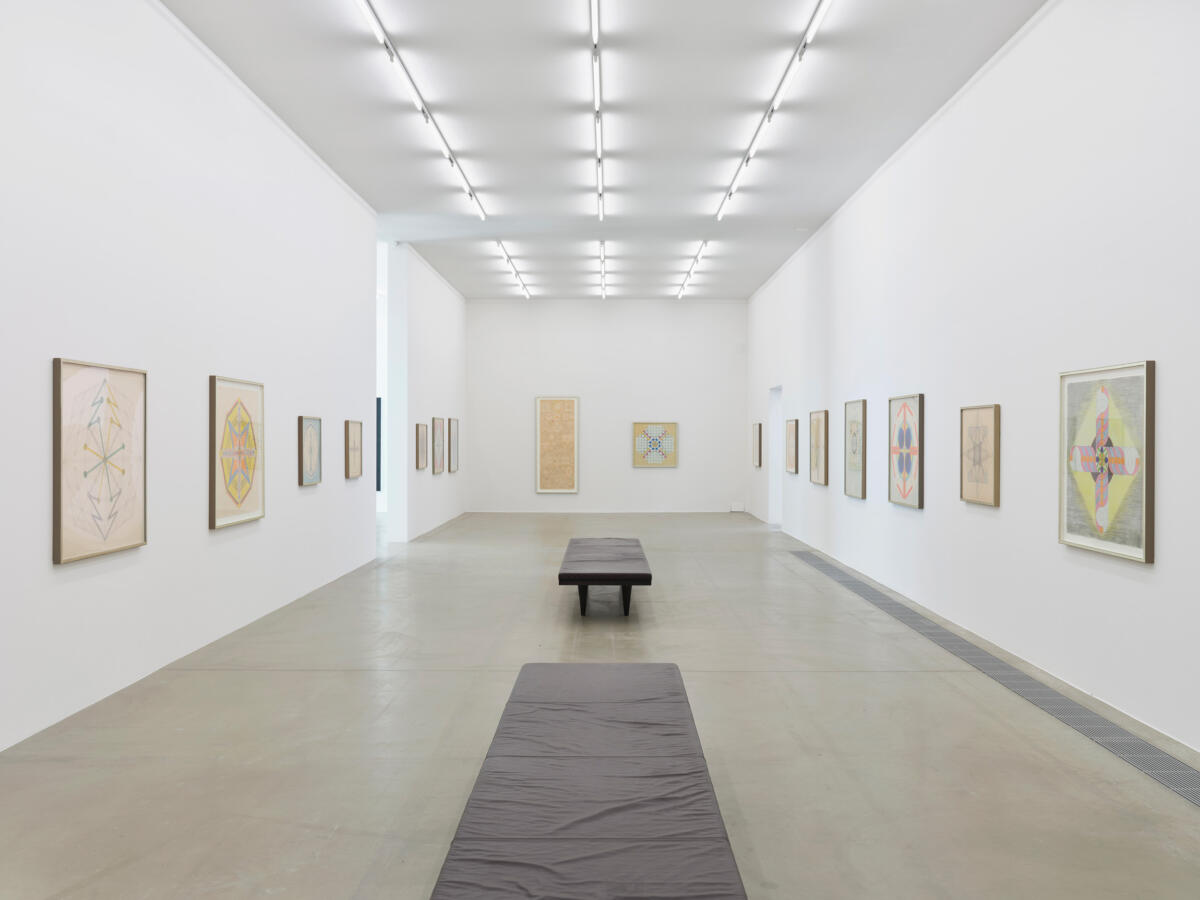


[DE]
Emma Kunz (1892–1963) fasziniert – heute mehr als je zuvor. Am selben Ort, an dem ihr Werk 1973 für die Kunst entdeckt wurde, wird das Schaffen der Aargauer Forscherin, Naturheilerin und Künstlerin Positionen der zeitgenössischen Kunst gegenübergestellt. Diese setzen sich mit Kunz’ Arbeit und spezifischen Themen aus ihrem Wirkungskreis auseinander.
Die Zeit werde kommen, in der man ihre Bilder versteht, soll Emma Kunz einst prophezeit haben. Tatsächlich scheint vieles, was sie in ihrem ganzheitlichen Denken und Praktizieren vorwegnahm, heute selbstverständlich: Zurückgezogen und fern vom Kunstgeschehen lebte sie eine erweiterte Kunstauffassung vor, lehnte die Frage nach Kunst oder Nicht-Kunst ab und bezog verschiedenste Handlungsfelder – Forschung, Medizin, Naturkunde ebenso wie das Übersinnliche, Magische, Visionäre – mit ein. Kunz schuf ihre Zeichnungen auf der Grundlage von Fragen, die sie mittels eines Pendels auf Millimeterpapier kartographierte. Im Zeichen von Wiederholung und Appropriation verwendete sie die Blätter auch nach ihrer Fertigstellung weiter und befragte sie von Neuem. In der Ausstellung sind rund sechzig dieser Zeichnungen – davon zahlreiche zum ersten Mal überhaupt – zu sehen. Der Dialog mit jüngst entstandenen Arbeiten von vierzehn zeitgenössischen Positionen zeigt neue und unbekannte Facetten eines Schaffens, das in einer Zeit, in der althergebrachte Kategorien kritisch hinterfragt werden müssen, grosse Aktualität aufweist.
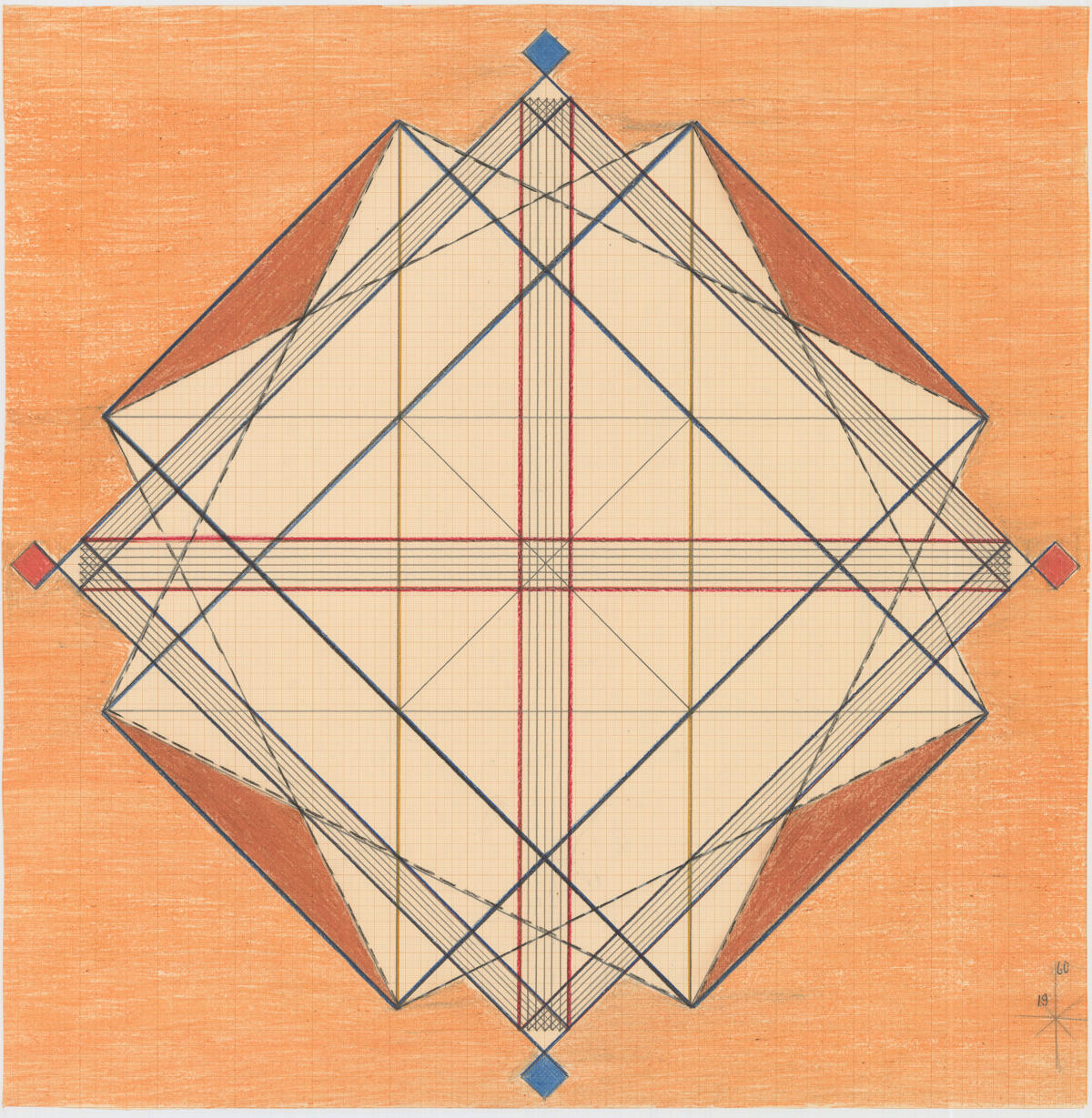
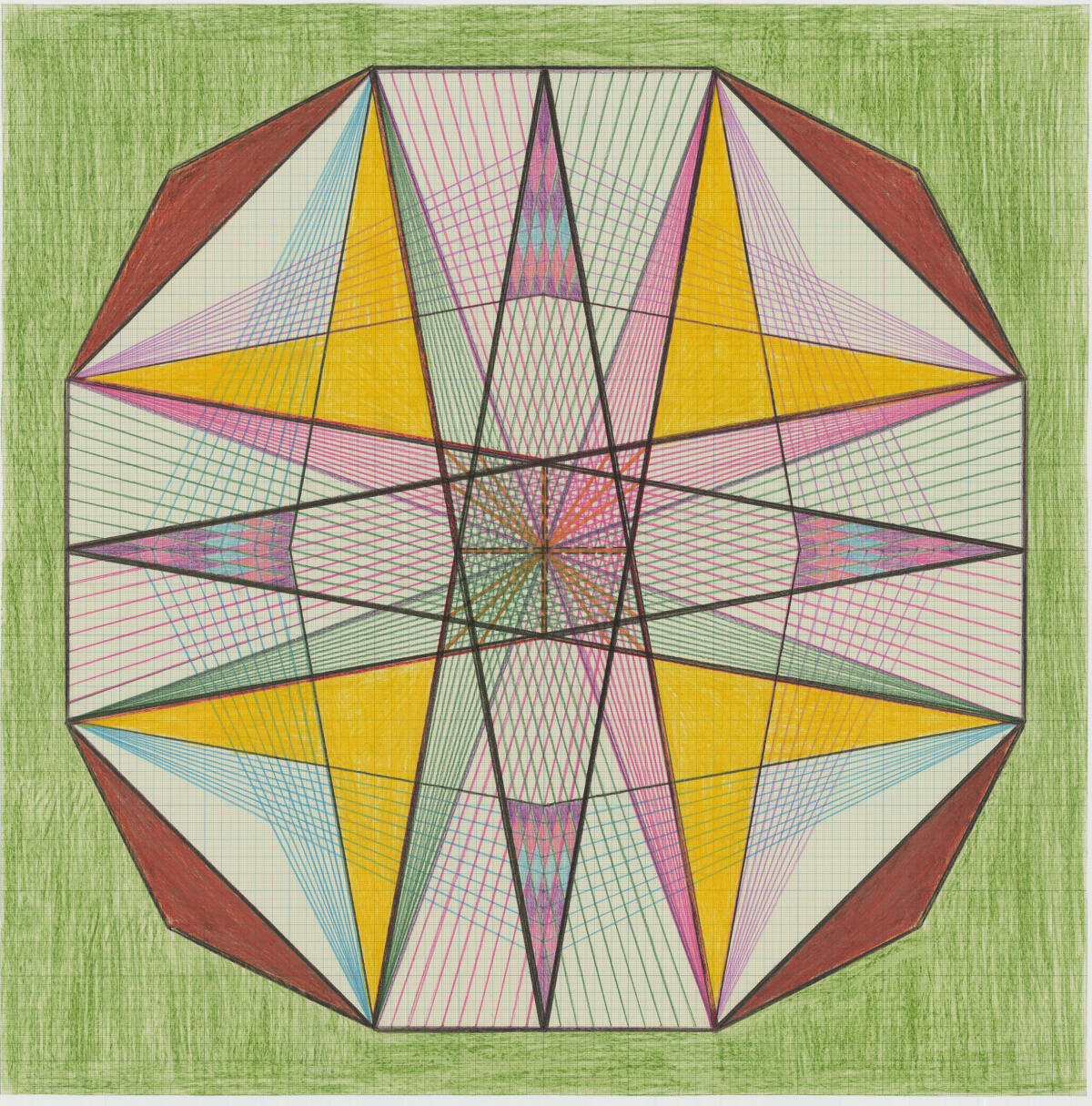
Dora Budor im Gespräch mit Meret Kaufmann
Meret Kaufmann: Im Aargauer Kunsthaus zeigst du die Arbeit Origin II (Burning of the Houses). Es handelt sich um eine speziell angefertigte Klimastaubkammer, die auf externe Reize reagiert. Kannst du den ursprünglichen Entstehungsprozess des Werks für eine Ausstellung in der Kunsthalle Basel im Jahr 2019 schildern und wie es sich in Aarau in den Kontext der Werke von Emma Kunz integriert?
Dora Budor: Die Arbeiten aus der Origin-Serie sind aus einem langen Rechercheprozess für meine Einzelausstellung I am Gong heraus entstanden. Für die Ausstellung entwickelte ich ein System, das mit der Klanglandschaft des gerade im Umbau befindlichen Konzert hauses gegenüber interagierte: Die Baustellen geräusche wurden zu einer «Partitur» für die Ausstellung, in der alle oder zumindest der Grossteil der Arbeiten und Installationen so angelegt waren, dass sie von dieser un kontrollierbaren Komposition gelenkt und geformt wurden. Ich wollte an einen tatsächlich ablaufenden Prozess andocken, seinen Überschuss anzapfen, sodass die unbeabsichtigten Nebenprodukte von Arbeit und Fortschritt recycelt würden und einer Ausstellung Leben einhauchten. An den anderen Orten, wo Origin II (Burning of the Houses) gezeigt wird, setzt sich das Werk aus den Reaktionen auf den jeweiligen Kontext innerhalb und ausserhalb des Gebäudes zusammen. So werden einerseits die Konsequenzen, die die Veränderung der Umgebung mit sich bringt, in die Institution hineingetragen, andererseits werden die Einzelheiten auch verwischt, da es die Vielzahl der menschlichen und nichtmenschlichen Einflussgrössen unmöglich macht, nachzuvollziehen, ob die akustischen Ausschläge von Bohrungen im Asphalt, Streitereien unter den Arbeitenden oder von einer im Sturm flatternden Abdeck plane herrühren. Klang ist im Wesentlichen eine Art von Druck: Es ist ein Rühren an der molekularen Beschaffenheit der Luft, eine oszillierende Kraft, die sich durch jedes Medium bewegt, auch durch Körper und Bauwerke. Man könnte sagen, dass das Werk mit hilfe von Sinnesorganen funktioniert, die auf Reize unterhalb der Wahrnehmungsschwelle des Publikums reagieren – darin ähnelt es den Arbeiten von Emma Kunz. Sie sind seine Grundbedingung, die wir zwar nicht sehen oder fühlen können, die aber sichtbar den Zustand des Werks beeinflussen.
Emma Kunz verstand sich selbst weniger als eine Künstlerin bzw. Autorin, sondern vielmehr als ein Medium ihrer zeichnerischen Arbeiten, in denen sie Energien kanalisierte und deren zugrunde liegenden, universellen Gesetzen sie Ausdruck verlieh. Zu diesem Zweck entwickelte sie eine Methode, bei der sie mit Millimeterpapier, einem Lineal, Bleistiften, einer Fragestellung und einem Pendel arbeitete. Auch deine Arbeiten richten Systeme ein, in denen menschliche an andere, meist maschinelle Energien ange schlossen werden. Daraus ergibt sich in dei nen Werken jeweils eine Eigendynamik, die traditionelle Auffassungen von Kunstschaf fenden als Autorinnen und Autoren infrage stellt. Wie interpretierst du deine Rolle(n), wenn du Kunst machst? Und was steht auf dem Spiel, wenn man das Konzept der Autorenschaft in der Kunstwelt infrage stellt?
Eines meiner Hauptanliegen ist es, die Grenzen des «Objektseins» zu destabilisieren und zu sprengen. Mit anderen Worten: Mich interessiert es, die Vorstellung von einem Kunstwerk als solidem, in sich geschlossenem Gegenstand hin zu etwas zu verschieben, das einem proteischen, sich stets weiterentwickelnden Netzwerk von Interaktionen und Beziehungen gleichkommt. Beide Gebäude, mit denen ich in Basel gearbeitet habe, stammten vom selben Architekten und wurden gegen Ende des 19. Jahrhunderts erbaut. Ein wichtiger Aspekt der Origin-Serie war, die Idee des Konservierens kritisch in den Blick zu nehmen. Um etwas zu erhalten, könnte es da nicht notwendig sein, es mutieren und sich anpassen zu lassen? Wenn man sich die gängige Praxis anschaut, wie Kunst konserviert und archiviert wird, dann ist es das genaue Gegenteil: Das Ziel ist es, den Ist-Zustand des Werks zu erhalten, vollendet und abgeschlossen. Dagegen möchte ich die Kontrolle ein Stückweit dezentralisieren und den Kunstwerken die «Handlungsf ähigkeit» zugestehen, sich je nach Umgebung und Epoche zu verändern. Ich sehe die Origin Arbeiten oft als instabile «Bildformen»: Bilder, die nur für den Moment geschaffen wurden, bevor sie sich zersetzen und in et was anderes verwandeln – also eine Gegenbewegung zum statischen und konservierten Kunstwerk, wie es in Museumssammlungen auftaucht. J. M.W. Turners Arbeit, die ich als Referenz verwendet habe, widerspiegelt seine ursprünglichen Neigung, das Wetter, den Zufall und sogar die Möglichkeit der Zerstörung mit in das Kunstwerk einzubeziehen. Einige von Turners Gemälden waren in seinem Atelier unter einem grossen, zerbrochenen Dachfenster gestapelt, wo sie vom Regen und Smog «vollendet» werden konnten, bevor er sie wieder nahm, übermalte und sie wieder der Witterung aussetzte.
«Meine Arbeiten sind für das 21. Jahrhundert gemacht», hat Emma Kunz angeblich gesagt – eine Prophezeiung, die zum Nachdenken über die Geschichte, wenn nicht mehr zu Spekulationen über die Gegenwart und die Zukunft einlädt. Origin II (Burning of the Houses) wirft ebenfalls ein grosses und weitverzweigtes Netz in die Zeit aus; die Arbeit evoziert urzeitliche und ausserirdische Landschaften, darin verschmutzte Körper und erst noch werdendes Leben zugleich. Wie wichtig sind dir in deinem Werk historisches Situiertsein bzw. dessen absichtliche Verwischung?
In dem Augenblick, in dem ich das hier niederschreibe, hat sich der Himmel über der Bay Area bei San Francisco zu einem intensiven Orangegelb verfärbt und Leute berichten, dass es wegen der zurzeit wütenden Waldbrände Asche regnet. Die atmosphärischen Effekte der Aschepartikel und des Rauchs tauchen den Himmel in die selben «unnatürlichen» Farben, wie sie Turner vor ca. 150 Jahren zum ersten Mal in drei seiner Gemälde verwendet hat. Meine Kunst sucht nach Querverbindungen und Kontingenzen zwischen Dingen, wie sie sich durch die Geschichte hindurch und in die Zukunft hinein ergeben. Das macht es möglich, einen Schritt zurückzutreten und die Perspektive auf das Leben zu erweitern.
***
Dora Budor (*1984 in Zagreb, lebt in New York City) studierte Architektur in Zagreb, bevor sie für einen MFA an der Columbia University nach New York zog. Seitdem schafft Budor Werke an den Schnittstellen zwischen Architektur und Kunst: Installationen, Skulpturen und Environments, die von Narrativen und Atmosphären durchdrungen sind, die gleichermassen auf Kinoinszenie rungen, Science-Fiction und wissenschaftlicher Recherche aufbauen. Budors Arbeiten nehmen die Gestalt von Maschinen an, die die durchdringende Hybridisierung von Natur, Mensch und Technik spiegeln und zwischen Dys- und Utopien schwanken. Die Künstlerin knüpft oft an vergessene Geschichten und infrastrukturelle Bedingungen an, um im selben Zug vorherrschende Strukturen von Macht über menschliches und nichtmenschliches Leben zu enthüllen; so etwa in der Ausstellung I am Gong (2019), wo Frequenzen diverser Aktivitäten, die einen externen Gebäudebau begleiteten, zur Partitur der Ausstellung im Innern der Kunsthalle Basel wurden.
Meret Kaufmann (*1989, lebt und arbeitet in Zürich und London) studierte Kunstgeschichte und Theaterwissenschaft an der Freien Universität in Berlin und am University College London (UCL). Sie forscht gegenwärtig im Rahmen ihrer Dissertation über Rosemarie Trockel und Psychoanalyse und ist als Dozentin, Autorin und Kulturproduzentin u. a. an der Zürcher Hochschule der Künste, im Emma Kunz Zentrum study of Contemporary Art (UCL) tätig.
Imprint
| Artist | Agnieszka Brzeżańska, Dora Budor, Eitan Efrat & Sirah Foighel Brutmann, Athene Galiciadis, Florian Graf, Joachim Koester, Goshka Macuga, Shana Moulton, Rivane Neuenschwander, Mai-Thu Perret, Lea Porsager, Tabita Rezaire, Mathilde Rosier, Lauryn Youden |
| Exhibition | Emma Kunz Cosmos. A Visionary in Dialogue with Contemporary Art |
| Place / venue | Aargauer Kunsthaus, Aarau, Switzerland |
| Dates | 2 March – 24 May 2021 |
| Curated by | Yasmin Afschar |
| Photos | Conradin Frei |
| Website | www.aargauerkunsthaus.ch |
| Index | Aargauer Kunsthaus Agnieszka Brzeżańska Athene Galiciadis Dora Budor Eitan Efrat Emma Kunz Florian Graf Goshka Macuga Joachim Koester Lauryn Youden Lea Porsager Mai-Thu Perret Mathilde Rosier Meret Kaufmann Rivane Neuenschwander Shana Moulton Sirah Foighel Brutmann Tabita Rezaire |

